Military Macaw: Bird Species Profile
Besides being chatty and social, military macaws are large parrots that have a reputation for being pleasant, even-tempered pet birds. Ideally, if it is hand-fed from birth, it can form a strong bond with its owners. These curious birds look forward to interacting with its human "flock."
Species Overview
Common Names: Military macaw, Bolivian military macaw, Mexican military macaw
Scientific Name: Ara militaris
Adult Size: 30 inches from the beak to the tip of the tail feathers, wingspans of over 40 inches, and weighs about 2 pounds
Life Expectancy: Averages 50 years
Origin and History
Military macaws are native to Central America and South America. Their range generally extends from Mexico to Argentina. Unlike other parrots, military macaws tend to prefer arid lands over tropical rainforests. You can also find them in dry forests and in trees near the water. However, some of the South American flocks live in humid, lowland forests as well as canyons and foothills.
There are two subspecies of this macaw: the Mexican military macaw and the Bolivian military macaw. The Mexican military macaw (Ara militaris mexicana) is the largest; it primarily inhabits Mexico. The Bolivian military macaw (Ara militaris boliviana) has a range that extends from Bolivia to northern Argentina.
This bird is a protected species; it is considered vulnerable for extinction. Though the overall population exceeds 10,000, habitat loss and trapping for the pet trade have made some regional populations endangered.
Historically, the military macaw has been on record since the 1500s when Europeans first came to the new world. Its name derives from the military personnel who brought them back to Europe. It also alludes to their olive green coloring that resembles "military green."
This macaw is a popular species used for breeding hybrid macaws in captivity, such as calico macaws, milicinth macaws, and miligold macaws.
Temperament
The military macaw is an easily tamed, good-natured bird. In the wild, they are rarely alone, living in pairs or flocks of 10 to 20 birds. In captivity, It is not unusual for this bird to prefer one person or even one gender. It is essential to introduce it to a variety of people, so it remains friendly in all social situations.
While they aren't known for being especially affectionate, military macaws that have been appropriately handled and socialized might enjoy some cuddling and petting.
These birds can get cranky at times. Macaws can get nippy if they're not happy or well trained. Many owners find that their bird's mood often reflects their own.
They can act like a "watch bird," letting you know when something's not right around the house. For instance, they might call out to let you know when a stranger is at the door. Military macaws like routines. It can usually anticipate when you are expected home and when it's dinner time.
A gregarious and intelligent parrot, military macaws are a popular choice for bird shows. Training them is relatively easy with treats, and they love to learn tricks. Some even become potty trained to only go in their cage.
Speech and Vocalizations
Though this bird is not naturally as good a talker as other parrots, you can train it to be talkative and it can learn a handful of words and phrases.
Like all macaws, these birds will rise with the sun each morning, and they scream to let you know they are up. This alarming call happens again in the evening when readying for bedtime. While they're generally considered one of the quieter macaws, they can screech and have a distinct croak. This noise level is usually not suitable for apartment or condominium living.
Military Macaw Colors and Markings
Military macaws are mainly green with more bright lime green on the head that progresses into darker and olive greens on the body. They have brilliant blue edging on their wings and a bright red tuft on their foreheads. Their tail feathers include browns and reds with a yellow-olive tint underneath.
These birds have bold black beaks and dark gray legs and feet. Their eyes are framed by the classic bare macaw facial patches, each with concentric rings of small black feathers.
This is a monomorphic species, meaning males and females look alike. DNA or surgical sexing are the only ways to determine whether the bird is male or female.
Caring for a Military Macaw
In captivity, a parrot's owner becomes the bird's flockmate. This bird is not a pet that you can buy and ignore; these birds need interaction and mental stimulation. If you don't oblige them, you will pay the price in wrecked property, bitten fingers, and frustration.
The cage itself needs to be large—at least 2.5-feet by 3-feet wide and 5-feet tall. If you can, create a dedicated bird-safe room. Be sure to include a large perch inside the cage and have a play stand for time outside its home. The military macaw may become territorial with its cage; limit putting your hands in the cage while the bird is inside it.
You will need to clean the bird's cage on a regular schedule. Clean the perches and toys once a week, wash the floor of the cage once a month, and thoroughly sanitize the rest of the cage once a year.
Consider the costs of owning one of these parrots before rushing out to get one. Veterinary bills, quality feed, toys, and cages add up. If you can't give your bird the best of everything, consider holding off on adopting one until you can.
Common Health Problems
Macaws may be long-lived birds, but, like all parrots, they are prone to a viral infection called macaw wasting syndrome and overgrown beaks. Like other pet parrots, military macaws may resort to self-mutilation by feather plucking if they feel neglected or bored.
Diet and Nutrition
In the wild, military macaws feast on seeds, berries, nuts, fruits, and vegetables. Pet military macaws should eat a similar diet made up of a high-quality seed or pellet mix and fresh bird-safe fruits and vegetables.
Macaw owners often find that their bird likes to join them for dinner. You can feed them nutritious "people food" on occasion, including small amounts of protein like chicken. If it's healthy, natural, and generally considered "good for you," it should be good for your bird as well. The exceptions are avocado, chocolate, and rhubarb, which are toxic to birds.
Depending on its size, a macaw will eat about 1/2 to 3/4 cup of parrot mix and about 1/2 to 3/4 cup of fruit and vegetables every day. You can feed it once in the morning upon waking and at dusk before it goes to sleep. Remove all uneaten food before bedtime.
Exercise
In the wild, military macaws fly several hundred miles a day. In captivity, regular exercise is essential. Owners should make sure that their pets are allowed a minimum of 2 to 4 hours of playtime outside of their cages every day. This activity time gives the birds a way of stretching their wings, exercising their beaks, and will provide mental stimulation as a bonus.
Military birds are active, so occupy their time with tasks and activities. Bird-safe toys are a must. One of their favorite activities is chewing, so wood will be your go-to, even if it's just tree branches. This bird will also appreciate swings, ropes, link chains, and bells.
Toys are also excellent distractions for this curious parrot that may otherwise spend its time screeching, feather-plucking, or chewing things around your home.
Intelligent, can learn to speak and perform tricks
One of the quieter macaws
Even-tempered, friendly, and social
Can be noisy, not well-suited for apartments
Requires at least 2 to 4 hours of supervised out-of-cage time
Large bird that requires a sizeable cage
Where to Adopt or Buy a Military Macaw
Military macaws are not as easy to find as the more colorful and popular macaws. Although, the military macaw is bred successfully in captivity, so you should be able to purchase a military macaw from a reputable breeder or adoption agency. These birds cost about $2,500. Some online sources where you can find military macaws include:
- Rescue the Birds
- Free Flight Exotic Bird Sanctuary
- Birds Now
Contact breeders to see if you can spend some time with them and their birds. Talk to someone who has experience raising these birds before you decide if they are right for you. Before you buy, make sure that the bird is alert, active, and exhibits all the signs of a healthy bird, such as bright eyes, clean feathers, and full crops.
More Pet Bird Species and Further Research
If you’re interested in similar species, check out:
- Green-Wing Macaw Species Profile
- Hyacinth Macaw Species Profile
- Severe Macaw Species Profile
Otherwise, take a look at all of our other macaw species profiles.
RECOMMENDED NEWS
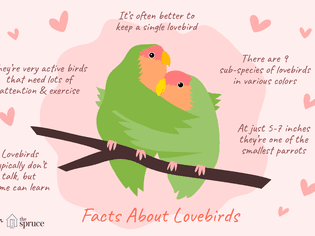
Facts About Lovebirds
Lovebirds are one of the most popular pet parrot species, and for those who are familiar with them,...
Read More →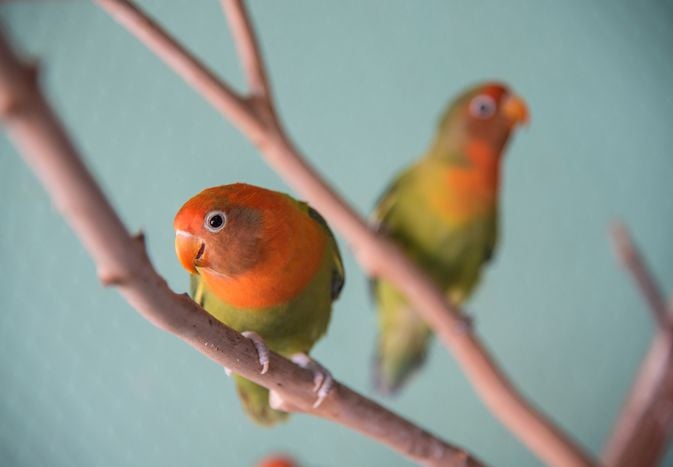
Lovebird (Pocket Parrot) Species Profile
Lovebirds are a favorite among pet birds, often called "pocket parrots," and are among the most col...
Read More →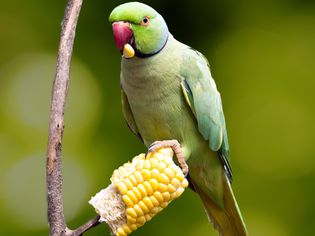
Safe Vegetables for Pet Birds to Eat
Many of us have heard about how important it is to eat plenty of vegetables throughout our lives, a...
Read More →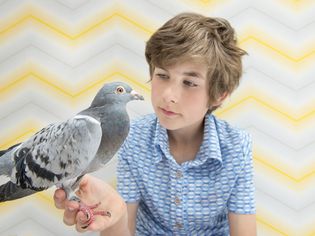
Common Pigeon Diseases
Pigeons are surprisingly popular pets. They, along with doves, are short-legged, stout-bodied birds...
Read More →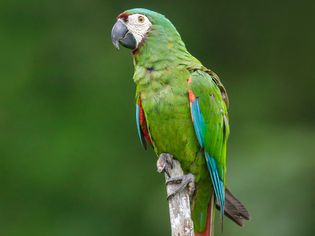
Severe (Chestnut-Fronted) Macaw: Bird Species Profile
Eye-catching and charmingly easy-going, severe macaws are the largest of the mini macaws. Thes...
Read More →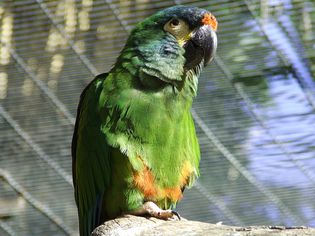
Illiger's Macaw (Blue-Winged Macaw): Bird Species Profile
Beautiful, playful, and charming, the Illiger's macaw has grown in popularity as an easily trainabl...
Read More →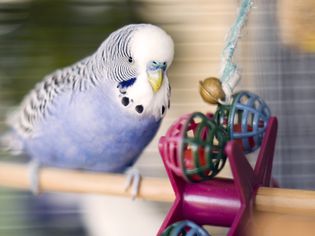
5 Cheap Bird Toys You Can Make at Home
A dilemma that many bird owners face is the problem of providing enough toys for their precocious p...
Read More →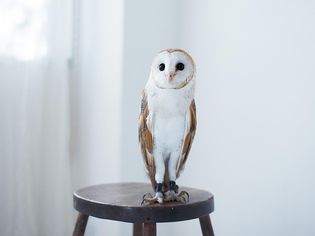
Do Owls Make Good Pets?
In many movies, books, and TV shows, owls are shown to be incredibly friendly, intelligent, and aff...
Read More →
The Relationship Between Pets and Children: How to Foster a Positive Bond
There is growing evidence that pets, especially dogs, are good for children. This evidence surely h...
Read More →
Comments on "Military Macaw: Bird Species Profile" :